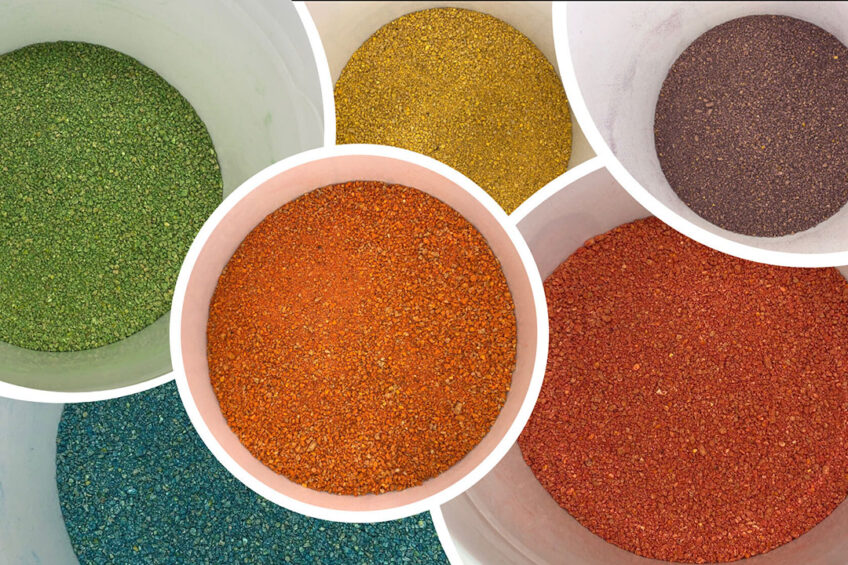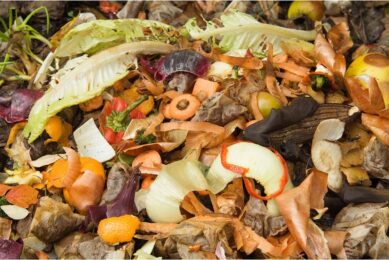Colour of broiler feed put to the test

Birds, including chickens, can see in a broad range of the colour spectrum, and some colours can be stimulatory. A recent study in the US set out to determine whether colouring feed could stimulate broiler chickens to consume more.
Chickens have well-developed trichromatic vision, allowing them to see all sections of the visible light spectrum and some ultraviolet, and it has been reported that simple tasks by birds, such as pecking, can be influenced by colour and can be utilised for increased interest in a particular food item.
Previous studies on poultry feed colour
Although somewhat inconsistent, previous research has demonstrated that feed colour has the potential to increase or decrease feed consumption in broilers, thus affecting body weight gain during the growing period. H. Khosravinia observed that broilers consumed significantly more feed with green lighting and green feed over other light and feed combinations. Additionally, J.B. Cooper explored feed colours in turkeys and reported that the birds preferred green colours, as indicated by their strong acceptance of green feed. White Leghorns were tested on their response to red, yellow, green, and blue feed colours, preferring blue feed the most and red the least, with red feed significantly decreasing feed consumption. In contrast, Leslie et al. found that when broiler chicks were given a choice between a non-coloured and coloured feed, they preferred non-coloured diets.
Longer and shorter wavelengths
To expand the base of knowledge related to the colouration of poultry feeds, this research was undertaken to assess how altered feed colour may impact the performance of broilers grown to 21 days of age. Colours were
selected for this research to represent primary and secondary colours, and representing longer (red, orange, yellow, green) and shorter wavelengths (blue and purple).
Lupins as a soya substitute for broiler nutrition
Novel protein sources for broilers need support from the whole supply chain to ensure the economics stack up and there is a consistent supply. Find out more…
Broiler feed colour trials
2 trials were conducted by researchers at the School of Agriculture at the Middle Tennessee State University in the US to determine feed colour effects on broiler performance:
– Trial 1 included 4 treatments, namely control (complete broiler starter diet), red, green, and blue
– Trial 2 included 4 treatments, including control, orange, yellow, and purple
Dietary colour treatments consisted of added non-nutritive human food-grade powdered dyes. Control diets had a no dye inclusion. Each treatment (60 birds/treatment) was fed to 240 male Cobb 500 broilers during a 21-day growout, and data was analysed.
Results
For Trial 1, little effects of feed colour on bird performance were recorded. Most observed differences appeared to reside with feed colour effects on feed conversion. Red and green feed depressed day 1 to 21 AFCR by 3.2 and 2.4% (p<0.05), respectively, compared to the control diet. a similar effect from red feed was seen for afcr between day 1 and 14, with a 2.6% increase compared with control (p><0.05).>
Interestingly, birds consuming the blue feed had similar AFCR to control birds at every time period. However, no other performance parameters differed across treatments in this trial. Like the results of Trial 1, Trial 2 showed minimal influences of orange, yellow, or purple feed on overall bird performance compared to the control diet.
However, some interesting effects were detected. The BWG between day 1 and 14 of birds consuming the purple feed was 6.4% higher than birds consuming yellow (p<0.05). a similar trend was observed for day 7 to 14 bwg (p><0.05).>
Discussion
Broiler performance results from this study suggest feed colour effects are inconsistent, but do not indicate an
aversion to certain colours.
This study was conducted by Joseph P. Gulizia and Kevin M. Downs at the School of Agriculture at the Middle Tennessee State University in the US.
Join 31,000+ subscribers
Subscribe to our newsletter to stay updated about all the need-to-know content in the poultry sector, three times a week. Beheer
Beheer








 WP Admin
WP Admin  Bewerk bericht
Bewerk bericht